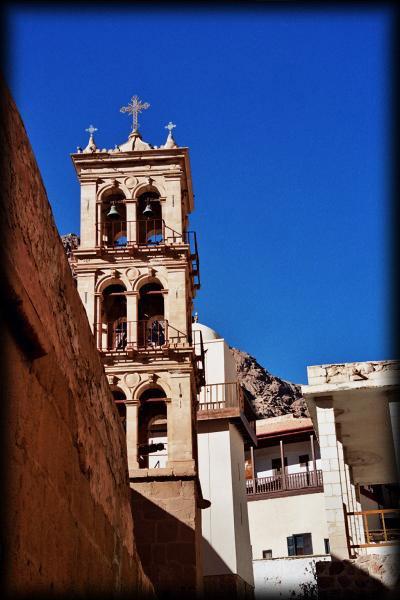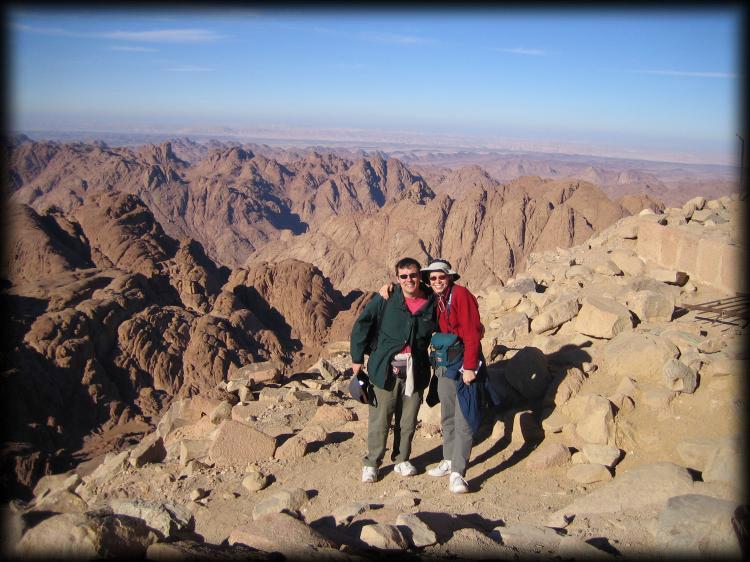![]()
1) Mont Saint-Michel, Normandy, France
As you drive across the mostly flat land of Normandy, suddenly in the distance a spire appears. Mont-Saint-Michel was originally founded in 708 by the Bishop of Avranches, who built a series of simple crypts after the Archangel Michael appeared to him three times. In 966 a group of monks were so inspired by the Mont that they built additions turning it into a larger church.

No matter your religious affiliation (or lack thereof) the faith and devotion of the thousands of people who toiled to build this monument on the very tip of a steep island can’t help but be inspirational.

2) Golden Temple, Amritsar, India
The Golden Temple is the holiest shrine in Sikhism. The temple is surrounded by a lake, whose waters are believed to be holy.
Next to the temple, the Guru-ka-Langar is an enormous community kitchen that is found in all Sikh Temples. Sikh founder Guru Nank created the kitchens to promote the concept of equality – the highest caste sits next to the lowest caste, and the rich next to the poor. In a country where the divide between the haves and have-nots is probably the largest we have ever experienced, the sight of hundreds of people sitting down to eat dhal and chapattis together was powerful. Being welcomed to share in their meal was truly something for which to be thankful.

3) Western Wall, Jerusalem, Israel
The Western Wall is the only part of the Jewish Temple that remains. It is actually part of what was once the retaining wall that supported the Temple Mount. The area in front of the Wall fills with people on Friday night for the beginning of the Jewish Sabbath.

In keeping with tradition, thousands of people write prayers on slips of paper and then push them into the cracks between the giant stones.

4) Ganges River, Varanasi, India
Images of the Ganges River and Varanasi have been burned into our travel obsessed minds by decades of reading National Geographic. We couldn’t wait to see this holy Hindu city and experience its famous ghats and devoted bathers.
Floating candles are set afloat as an offering and are a common sight in Varanasi. These are the two we lit in honor of a friend’s birthday.
5) Blue Mosque, Istanbul, Turkey
With its minarets rising high into the air, the Blue Mosque beckons the faithful and the tourist alike.

But even inside this famous mosque there are quiet spaces where you can feel a quiet peacefulness in this beautiful holy space.

In the city of Hebron, in the West Bank sits a heavily guarded building which is both a mosque and a synagogue. Holy to Christians as well, the building contains the graves of all of the patriarchs except for Rachel, who is buried in her own grave. This is the synagogue side – you can see the minarets from the mosque side.

The graves of Sarah and Abraham actually straddle the dividing line of the building and are visible from both sides. This is Abraham’s grave as seen from the mosque side. You can see how there’s bullet proof glass dividing the two spaces. Thankfully, despite the security challenges in the region, we were able to visit this holy space in peace. 
7) Haeinsa Temple, South Korea
Haeinsa is famous for it’s 81,340 sacred Budhist texts – woodblock scriptures, known as the Tripitaka Koreana. The woodblocks are housed and preserved in the 15th-century hall, the Janggyong Pango. Attempts to modernize how they are stored have failed, and they remain in an open air building.

The main hall of the Haeinsa Temple, the Daegwangjeon is beautiful in its own right. For us, though the most moving part of the experience is the path up to the temple. The serene mix of the wooded setting and the temple buildings forms the perfect balance between the natural and the man-made.

8 ) Saint Catherine’s Monastery and Mount Sinai, Sinai Desert, Egypt
The monastery is the easiest place to stay if you’re going to hike to the summit of Mount Sinai. It was built at the site where Moses is supposed to have seen the burning bush. It is also known as the Monastery of the Transfiguration. This is the tower of the Orthodox Church of Mount Sinai.

Of course, people flock to this monastery to climb Mount Sinai. Most make the climb at night in order to reach the summit for daybreak. Not that we don’t love a good sunrise, but we’re also very fond (and thankful for the opportunity) of sleeping in. Plus, rather than climb with the crowds in the dark, we climbed alone and were happy to find someone else up there to take our picture! The views alone are breathtaking and ample reason to give thanks in this beautiful spot, even if you have no religious connection to it.

Mount Nebo is where Moses is said to have seen the land of Israel, after 40 years of wandering in the desert. Moses Memorial Church stands at the peak.

Whether or not you think of this as the Promised Land, there is no doubting the beauty of the sweeping views from this spot.

10) Bahai Temple, Haifa, Israel
In the center of the city of Haifa, the immaculate gardens of the Bahai Temple sparkle all the way up Mount Carmel. The Shrine of the Bab is considered to be the second holiest place on Earth for Bahá’ís and the only way to see this spectacular sight up close is on a guided (free) tour.

The views of the impeccably kept gardens rolling like a green ribbon with the blue of the Mediterranean in the background will convince you this is a special place, regardless of your religious beliefs.




